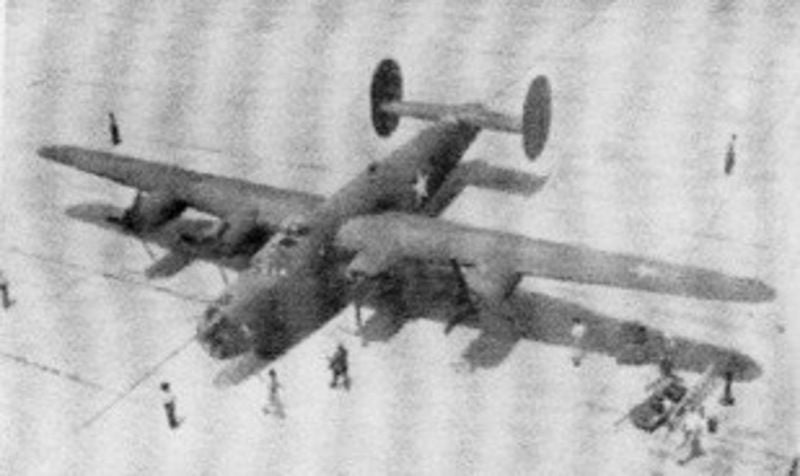I am frequently asked questions about the famous World War II bombers, the B-17 Flying Fortress and the B-24 Liberator. This flyboy had the pleasure of flying both bombers. I thought it might be interesting to use personal experience with the two big aircraft in describing and comparing them.
The experience began in November 1944. The commanding general of the Southeast Training Command selected three of us senior officer flight instructors for a special assignment. We were to proceed to Chanute Army Air Corps Base, Illinois and replace their B-17s with the B-24 four-engine bomber. Chanute was a training base for first pilots and flight instructors. Beginning with their commanding officer, we were to train all pilots on flying the B-24 Liberator. With four companies (Consolidated, Douglas, Ford, and North American) manufacturing the B-24, 6,000 more planes than B-17s were produced. Boeing built the B-17, which was the first four-engine bomber. The B-24 Liberator came along after the B-17 Flying Fortress.
Placing the two four-engine bombers next to each other, there were noticeable differences. The B-17 had a tall single rudder, while the B-24 utilized smaller twin rudders. Another difference in the two planes concerned the landing gear. The B-24 was designed with the improved tricycle wheels, which made it easier to taxi and land. The B-17 used the standard two main wheels and tailwheel configuration.
Both bombers used big radial 1,200 HP engines. Wright power plants in the B-17 and the highly regarded Pratt & Whitney in the B-24. Neither plane had a pressurized cabin for altitude flight. Without it, the crew had to use oxygen above 10,000.
Another major difference in the two aircraft was in the wing. The B-17 had a very large wing and ailerons (the moveable portion of the wing), while the B-24 used a smaller wing and ailerons for speed. Thus, the Liberator was faster, but the Flying Fortress could fly higher. Typical approach landing speeds for both planes, using full wing flaps was 120 miles per hour. Touchdown was typically 95-100 mph for both. Loss of an engine or engines made the B-24 more difficult to handle.
There were other smaller differences between the two airplanes, but both bombers performed well during World War II. The media portrayed the B-17 Flying Fortress as the most glamorous, probably because it was the first four-engine bomber. In an unusual coincidence, one of the flight instructor pilots at Chanute, a captain and squadron commander assigned to me for checkout in the B-24, was the now late John Rice, of Lewisburg. We had been classmates and teammates at Bucknell.
The B-17 pilots were not happy to make the change. The B-24 required a definite difference in pilot technique on final approach and landing. The B-17 pilot used considerable aileron for control, while the B-24 required use of the rudder with limited aileron action. Along with that, the Chanute pilots had to study and learn about a completely different airplane and its parts. We heard lots of grumbling.
Whatever four-engine bomber one may prefer, the B-17s and the B-24s and the men manning them, shortened the war and made victory possible, say the historians.
Joseph A. Diblin, of Northumberland, was a four-engine pilot during World War II and has worked as a test pilot and civilian flight instructor. He is also seaplane rated. If you are a veteran — Iraq, Vietnam, Korea, World War, etc. — and would like to share your story, please contact him at 570-473-2594.


